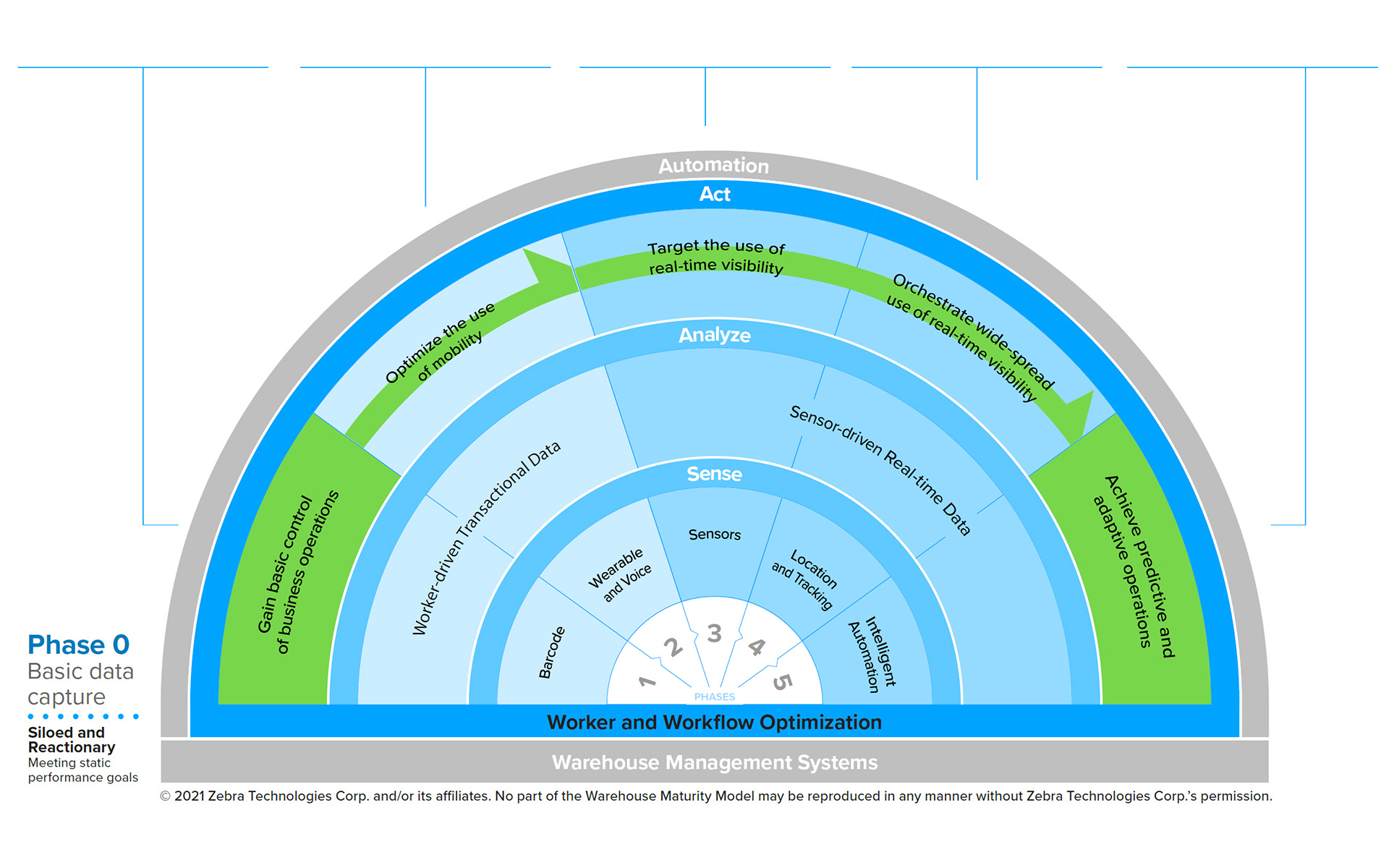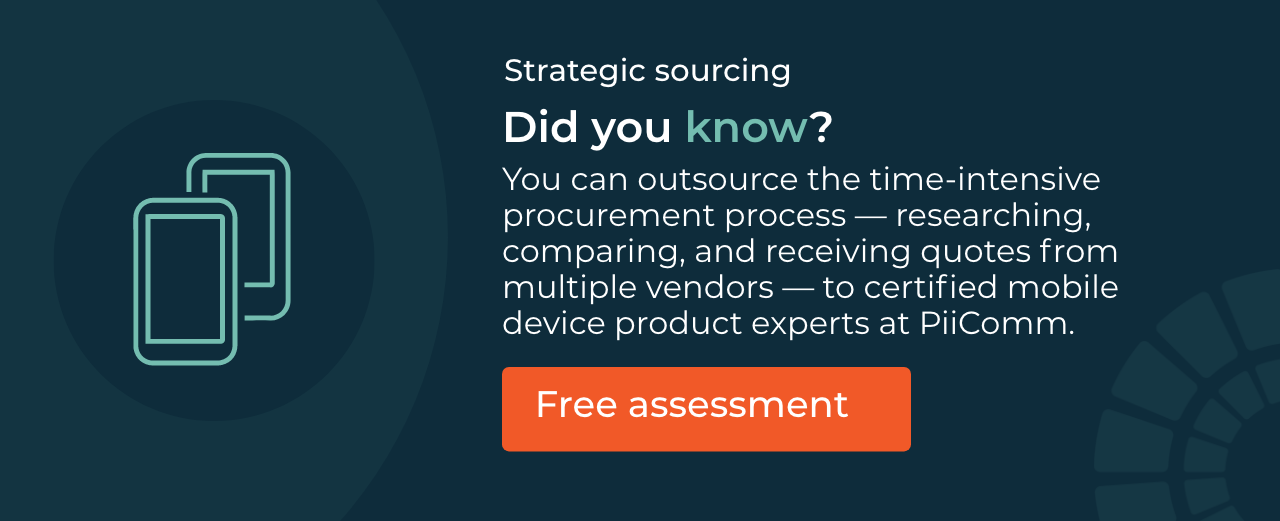
Warehousing leaders looking to keep pace with an accelerating volume and complexity in their operations will often start with the receiving dock, with 83% reporting that they will be increasing the number of SKUs carried and 81% planning to expand returns management operations.
Applying a Warehouse Maturity Model
To optimize your labour and workflows at the receiving dock, you know that careful long-term planning is required to avoid disruptions to current operations. For this reason, the Zebra Warehouse Maturity Model framework might be of interest as you move forward strategically. This Model outlines 5 Phases, with Phase 0 defined by basic data capture and operations that tend to be siloed and reactionary.
- Phase 1: Increase data capture.
- Phase 2: Optimize the use of mobility.
- Phase 3: Target the use of real-time visibility.
- Phase 4: Orchestrate the widespread use of real-time visibility.
- Phase 5: Achieve predictive and adaptive operations.

A Phase-by-Phase Approach to Inbound Operations
When we apply this 5-phased approach to inbound operations at the receiving dock, the phases look like this:
- Phase 1: Enable the use of advance ship notices (ASN) so that mobile workers can receive, sort, and label efficiently. The hardware involved in this phase would typically include Android mobile computers , a desktop printer, and a rugged scanner.
- Phase 2: Equip lift truck operators with task-specific devices to keep heads-up, focused, and safe while unloading. The hardware involved in this phase would include vehicle-mount computers and tablets.
- Phase 3: Automate the receipt of goods as they are unloaded on conveyors or by pallet. The hardware involved in this phase would include fixed RFID readers and antennas and fixed industrial scanning.
- Phase 4: Know with near 100% accuracy where assets are located in staging areas for faster, error-free put-away. The technology for this phase would involve real-time location systems (RTLS).
- Phase 5: Fuse multiple sensor and transactional data inputs to automate receiving decisions through intelligent automation. For this phase, all software applications are integrated, typically with APIs.
Are you interested in a phased approach to be mapped out for your specific inbound operations? PiiComm is here to support you on your modernization journey with expert guidance on hardware, software, services, and financing to help you boost your bottom line and help you meet your operational key performance indicators (KPIs).

